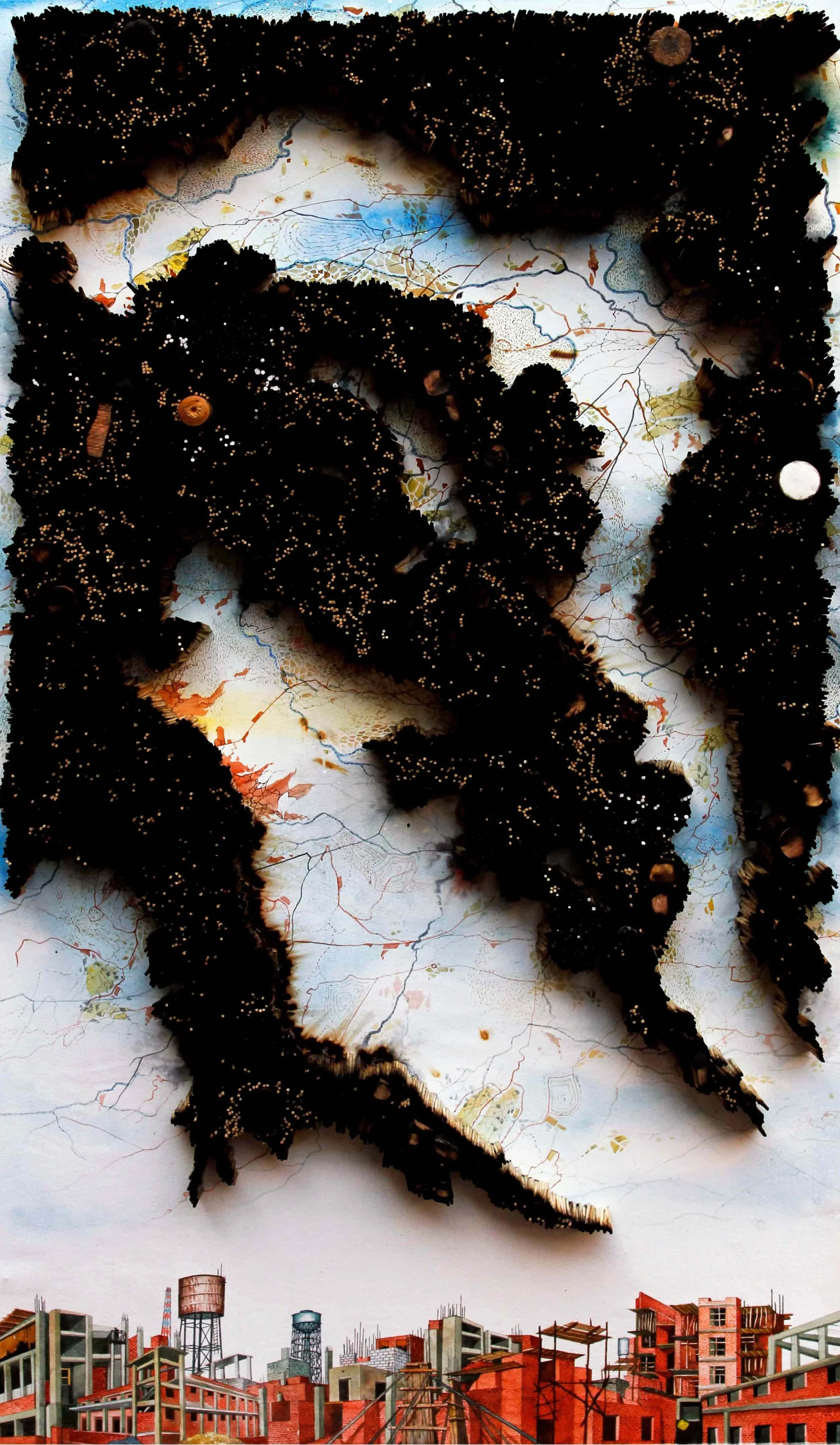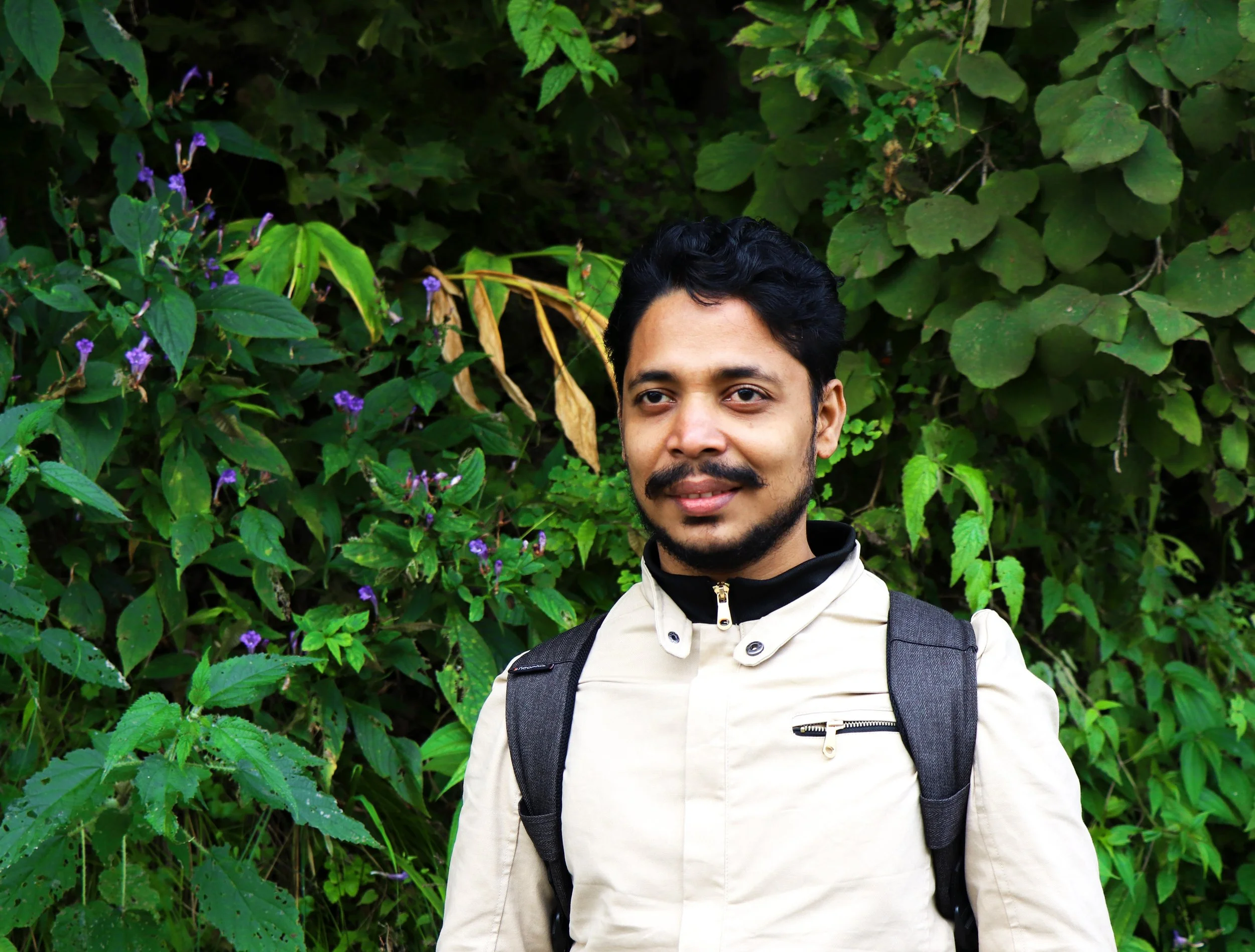Robust Concepts, Nuanced Aesthetics: Digbijayee Khatua’s Kunstlerroman in the making
A usual pleasant day in October, at the cusp of a bygone summer and an approaching autumn in Delhi, artist Digbijayee Khatua’s cozy studio with artworks for walls encapsulate our intense conversations as the evening deepens. “Art is a meditation, a form of bhakti (devotion),” he says, “It evolves and reveals itself slowly and eventually.”
City Unclaimed I, 2019 by Digbijayee Khatua; Image courtesy the artist
Khatua traces his artistic sojourn from his native place, Mahulia in Odisha to his current place of practice in Delhi. A shift from rural to urban, Odia to Hindi, the home and the world, the artist’s mundane realities changed enormously and to this he credits most of his conceptual development and modified techniques. Cityscapes and elements of urbanity are eminent in his works. He expresses with watercolours in a layered dialogue to accentuate existential depths within the city. Interestingly, his works do not lose aesthetic pleasure in the otherwise grim realities, thereby retaining a subtle yet striking visual allegory.
The artist talks about his village, reminiscing days when he was still a child and would accompany his mother, a teacher at aanganwadi (play school), to create traditional patterns with golam (rice powder) on the walls of their home. Digbijayee, the eldest of his siblings, would often accompany his father, a history teacher, to ancient monuments in Odisha, a place historically and culturally rich with temples, caves and Pattachitra (or Patta) art style. While still very young he gravitated towards art. His initial works included realistic landscapes, portraits of people in royal costumes and of workers. In his oeuvre one finds allusions to the Patta technique, and in its mythological storytelling, fixed form, robust hues and floral motifs, Khatua renders a contemporary take on the style.
While his physical surroundings helped him develop an aptitude in composition, detailing and precision, ideas of conceptual cogency and presentation took shape in his works after he came to Delhi for his post-graduation. In the ever-bustling streets of the city, all that is lost is seldom found. Hints of his homeland continue to appear in his works although it has varied in intensity. Observation of the surroundings is a continual process and when he sets to work each visual involves a process of recollection, concept exploration, formation and realisation. “Here (in Delhi), each street houses people from different regions and cultural backgrounds. Their routine engagements reveal the penetration of urbanism in their lifestyle,” he observes. Khatua’s scrutiny extends to the congested and adulterated lifestyle. The balcony, as opposed to the spacious aangans or courtyards of the village intrigue him and take shape in layers with a three-dimensional effect in his works. He further notes, “People far away from rural spaces try to recreate the environment in the city, in the audio of chirping birds, fountains, artificial flora, things that make one feel closer to nature.”
Mapping Factory, 2016 by Digbijayee Khatua; Image courtesy the artist.
The above work is Khatua’s first inspired effort. A take on Delhi’s pollution, the burnt matchsticks suggest the scorching impact of development. Elements of fire, darkness and various other paradoxes feature in his paintings. One such work where a person clad in royal clothing sits on a donkey assumes a commentary on the vanity and egoism of people as a result of urban conditioning. “I feel that it is intrinsic for us to know the social, political waves not just our country, but the world is going through. It helps contextualise the works,” the artist attempts to create a space in his works where the real and the perceived, the personal and the political collide.
Artist Digbijayee Khatua
Between what an artist seeks to what inspires him, we delve into the metaphors of the subconscious that shape into paintings, an output of strolls and candid conversations with vendors, shopkeepers and others in the vicinity, which occur without a purpose, but sometimes, come together as visuals. “Work is a function of my everyday experience in life,” he says, variably devoting twelve to fifteen hours a day to his work. Layout evolves with time and he prefers to make the entire process interesting by keeping only the basic measurements a constant, while the narrative reveals itself gradually, “Work won’t be as much fun if I knew what I am going to paint beforehand.” But Khatua remains well aware of the importance of visual representation and impressions, thereby creating works that first grab attention of the onlooker and then renders itself to intricacies. No work, however, sits unyieldingly in his studio and becomes a persistent subject of review.
At this juncture it seems plausible to wonder whether ‘Art for art’s sake’ holds as much relevance today. Or does art for its ‘sale’ see a greater bearing? For an artist thinks best about what to create and how to leave a mark, in most cases a work is an emotional and conscientious output and the commercial aspect remains a challenge. Khatua is zealous yet honest in his aspirations as he seeks for his artistry to withhold the gaze regardless of whether the onlooker understands art, “If a viewer bends to see my work, to get a closer view, I feel privileged. It shows that my work made someone think and engage with it at more than just the surface level,” he remarks.
This article was first published in Anant Art Gallery’s Newsletter 2020.




